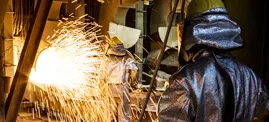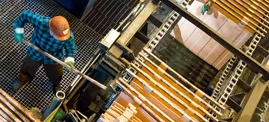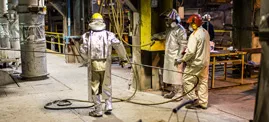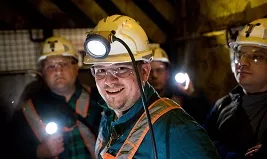General Information
The Carlota Mine is located in the western part of the United States in the Miami-Globe mining region of Arizona. The mine is surrounded by mountains and desert landscape.
History
The currently mined deposit was identified in the mid-1990s. After confirming the resources, several years were spent collecting baseline environmental, social, and geological data to understand the feasibility of the project and study potential impacts on the environment.
Production commenced in 2008 and the first copper cathode was produced in Q4 of the same year.
KGHM Polska Miedź SA acquired the entire Carlota mine with the Quadra FNX acquisition in 2012.
In 2014 mining operations from the open pit ceased in the Carlota-Cactus Pit. However, enhanced residual copper production continued utilizing subsurface leaching injection wells into the Heap Leach Pad. In 2018, mining operations in the Eder South area initiated.
Production
Extraction of copper ore from the Carlota mine is carried out using conventional methods typical for open pit mines, i.e. blasting and transporting the ore with haul trucks.
The ore is deposited on heaps for leaching with a sulfuric acid solution. The copper-enriched solution obtained after leaching is processed at the SX-EW (solvent extraction-electrowinning) in order to produce high-quality copper cathodes - the final product of the process.
In 2015, the site additionally introduced the SSL (subsurface leaching) system.
This solution allowed for the injection of sulfuric acid under low pressure directly into the heap, which in turn allows for the extraction of metal that was originally not fully leached from the ore stored in the last years of production.
Geology
The Miami-Globe mining district in eastern Arizona is known for economically large-scale porphyry Cu, Au, and Mo deposits, such as the Miami-Inspiration and the Cu Resolution.
The area is built of igneous, metamorphic and sedimentary rocks of various ages from the early Proterozoic to the Tertiary.
The Carlota deposit is formed by the surface mineralization of copper oxides in the proterozoic Pinal Schist. Chrysocolla is a dominant ore mineral and usually occurs as coatings, crusts and filling in fractures and heavily desintegrated rock masses.
Exploration
Carlota's concession areas still have some potential to explore for more oxide deposit.
In addition, in 2017-2019, a campaign was conducted to search for deeply lying potential copper sulfide mineralization. The drilling results indicate the possibility of a porphyry system in the vicinity, however, its identification requires further exploration work.





